5-HT_FAsTR: a versatile, label-free, high-throughput, fluorescence-based microplate assay to quantify serotonin transport and release
- PMID: 38504103
- PMCID: PMC10951269
- DOI: 10.1038/s41598-024-56712-z
5-HT_FAsTR: a versatile, label-free, high-throughput, fluorescence-based microplate assay to quantify serotonin transport and release
Abstract
The neurotransmitter serotonin plays a pivotal role in mood and depression. It also acts as a vasoconstrictor within blood vessels and is the main neurotransmitter in the gastrointestinal system. In neurotransmission, released serotonin is taken up by serotonin transporters, which are principal targets of antidepressants and the psychostimulant, ecstasy. The investigation of serotonin transporters have relied almost exclusively on the use of radiolabeled serotonin in heterogenous end-point assays. Here we adapt the genetically encoded fluorescent biosensor, iSeroSnFR, to establish and validate the Serotonin (5-HT) Fluorescence Assay for Transport and Release (5-HT_FAsTR) for functional and pharmacological studies of serotonin transport and release. We demonstrate the applicability of the method for the study of a neuronal, high-affinity, low-capacity serotonin transporter (SERT) as well as an extraneuronal low-affinity, high-capacity organic cation transporter and mutants thereof. 5HT_FAsTR offers an accessible, versatile and reliable semi-homogenous assay format that only relies on a fluorescence plate reader for repeated, real-time measurements of serotonin influx and efflux. 5HT_FAsTR accelerates and democratizes functional characterization and pharmacological studies of serotonin transporters and genetic variants thereof in disease states such as depression, anxiety and ADHD.
Keywords: Biosensor; Depression; Organic cation transporter; Serotonin; Transporter.
© 2024. The Author(s).
Conflict of interest statement
The authors declare no competing interests.
Figures
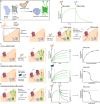
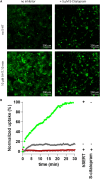

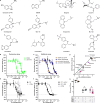
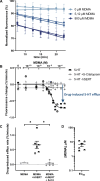
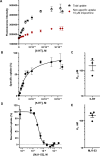
Similar articles
-
MDMA (Ecstasy) and human dopamine, norepinephrine, and serotonin transporters: implications for MDMA-induced neurotoxicity and treatment.Psychopharmacology (Berl). 2007 Jan;189(4):489-503. doi: 10.1007/s00213-005-0174-5. Epub 2005 Oct 12. Psychopharmacology (Berl). 2007. PMID: 16220332
-
Organic Cation Transporters in Psychiatric Disorders.Handb Exp Pharmacol. 2021;266:215-239. doi: 10.1007/164_2021_473. Handb Exp Pharmacol. 2021. PMID: 34282486 Free PMC article.
-
Validation of a fluorescence-based high-throughput assay for the measurement of neurotransmitter transporter uptake activity.J Neurosci Methods. 2008 Mar 30;169(1):168-76. doi: 10.1016/j.jneumeth.2007.12.004. Epub 2007 Dec 17. J Neurosci Methods. 2008. PMID: 18222006
-
Unfaithful neurotransmitter transporters: focus on serotonin uptake and implications for antidepressant efficacy.Pharmacol Ther. 2009 Jan;121(1):89-99. doi: 10.1016/j.pharmthera.2008.10.004. Epub 2008 Oct 29. Pharmacol Ther. 2009. PMID: 19022290 Free PMC article. Review.
-
Neurotransmitter transporters in schistosomes: structure, function and prospects for drug discovery.Parasitol Int. 2013 Dec;62(6):629-38. doi: 10.1016/j.parint.2013.06.003. Epub 2013 Jun 22. Parasitol Int. 2013. PMID: 23800409 Review.
References
MeSH terms
Substances
LinkOut - more resources
Full Text Sources
Research Materials

